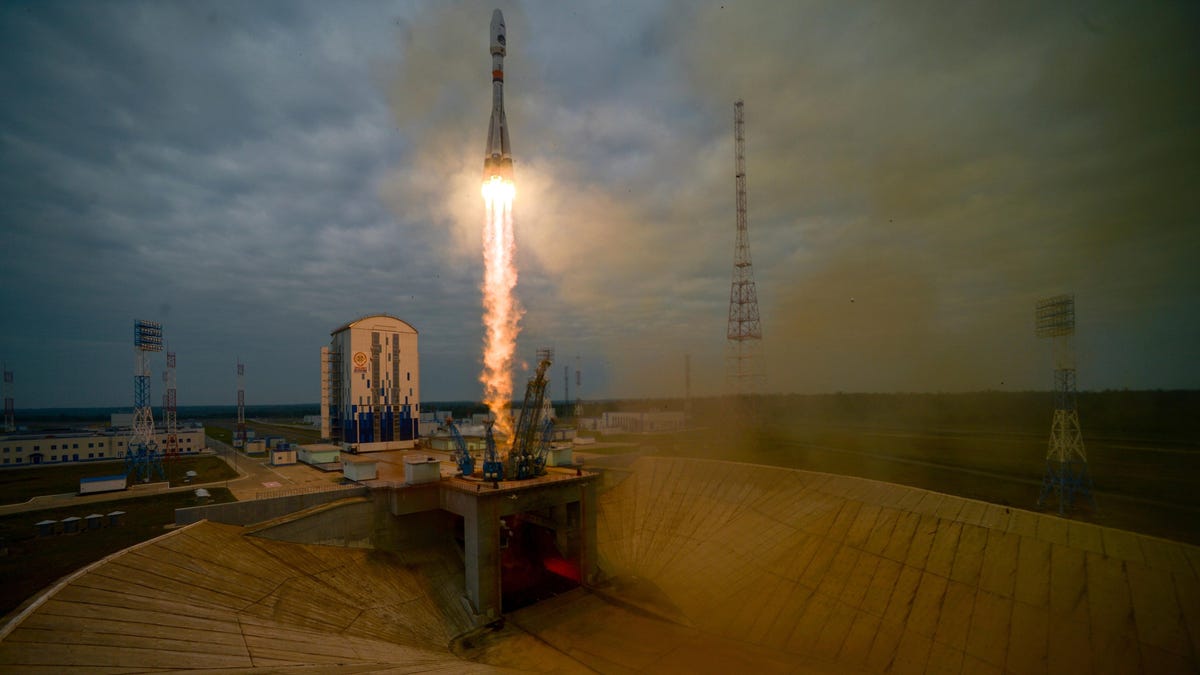
Russia has successfully launched its Luna-25 mission to the Moon, which will attempt to land on the lunar south pole later this month. If it sticks the landing, Russia will become the first country to pull off a soft landing on the south polar region of the Moon.
Luna-25 launched on board a Soyuz-2.1b carrier rocket at 7:10 p.m. ET on Thursday (2:10 a.m. local time on Friday) from the Vostochny Cosmodrome in Amur Oblast, Russia. It will take the spacecraft around five days to reach lunar orbit and another five days before its touchdown attempt, which is currently scheduled for August 21.
“I hope that a highly precise soft landing on the Moon will take place,” Yuri Borisov, head of Russia’s space agency Roscosmos told workers at the Vostochny cosmodrome after the launch, according to Reuters. “We hope to be first.”
Should it stick the landing, Luna-25 has a four-legged base and is expected to operate on the lunar surface for one year. The main purpose of the mission is to help develop technologies for landing on the Moon, as well as study the composition of the polar regolith, and the plasma and dust components of the lunar polar exosphere. The lunar south pole is of great interest to nations hoping to establish a presence on the lunar surface, with evidence showing that this region of the Moon may contain reservoirs of ice that could be used as drinking water, fuel or to make oxygen.
Russia isn’t the only one trying to land on the Moon’s south pole. India is also in the midst of its second lunar landing attempt with the Chandrayaan-3 mission, which launched on July 14 and is scheduled for a south pole touchdown on August 23. Whichever country makes it to the Moon’s surface will become the first to land on the lunar south pole. India is also hoping to join the very short list of countries to have landed on the Moon before: the Soviet Union, China, and the U.S.
Russia hasn’t launched a mission to the Moon since Luna-24 returned to Earth in August 1976, carrying samples of lunar regolith. Its long awaited successor, Luna-25, might be Russia’s attempt to stay relevant in the new space race to the Moon, which currently involves the U.S. and China as the main contenders.
China has been developing a lunar program that aims to rival NASA’s Artemis missions to the Moon, including plans for a permanent base on the Moon’s surface, and Russia wants in on the action. The International Lunar Research Station moon base was announced as a joint project between China and Russia in 2021, and other countries such as the United Arab Emirates and Pakistan later joined in on the project.
Russia needs to align itself with China after its European counterparts severed ties with Roscosmos following the invasion of Ukraine. Luna-25 was originally planned in cooperation with the European Space Agency (ESA), but the space agency pulled out of the mission and the subsequent Luna 26 and 27. Instead, Russia was forced to replace European-made parts on the lunar lander with locally built scientific instruments.
As a new space race heats up for the Moon, Russia really needs its lunar lander to make it to the surface to show that it still has what it takes to stick the landing.
For more spaceflight in your life, follow us on Twitter and bookmark Gizmodo’s dedicated Spaceflight page.






